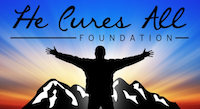
Click here to help toxic disease sufferers
How I Cured Morgellons
|
|
|
|
|
|
Peter 11/19/2024 1:47:45 AM MST |
Hey Jen Really enjoyed the content of this post. I had no idea! And I love historical trivia lie this. "Warmest regards," Peter | |||
Jen 11/19/2024 4:30:31 AM MST |
Hello everyone, Time is really off for me recently...something about time pathways are changing. Someone may understand better although I definitely feel off. Thanks Mel for reminding me about Friday. Here we go into the holidays! November’s full Beaver Supermoon reaches peak illumination on Friday, November 15, 2024. This is our fourth and final Supermoon of the year! Get more information, including Full Moon rise times, why we call it a “Beaver” Moon, and the best days by the Moon. When to See November’s Full Moon The Beaver Moon reaches peak illumination on Friday, November 15, at 4:29 P.M. EST. Find out exactly what time the full Moon will appear above the horizon in your area with our Moonrise and Moonset Calculator. Why Is It Called the Beaver Moon? For decades, the Almanac has referenced the monthly full Moons with names tied to early Native American, Colonial American, and European folklore. Traditionally, each full Moon name was applied to the entire lunar month in which it occurred and through all of the Moon’s phases—not only the full Moon. The Beaver Moon Why the “Beaver” Moon? This is the time of year when beavers begin to take shelter in their lodges, having laid up sufficient food stores for the long winter ahead. During the fur trade in North America, it was also the season to trap beavers for their thick, winter-ready pelts. With the changing of the seasons, November’s full moon marks the beginning of the end. In many different cultures, November’s full moon is intimately connected with death and loss, on both a literal and symbolic level. The Celts, for instance, called it the Reed Moon, comparing the mournful music made by wind instruments to the ghoulish sounds of spirits being drawn into the underworld. And not without good reason - the Full Mourning Moon marks a dangerous time of the year where people could easily slip into the underworld with a single misstep. We may enjoy the luxury of winter coats and central heating now, but freezing to death during the long, dark winters used to be a very real threat to early inhabitants of Northern America. In order to survive, making warm winter clothing out of beaver fur was crucial for American colonists and Native American tribes. This is why November’s full moon is also known as the Beaver Moon. During this month, beavers are very active, working hard on dam construction, and so this was a good time to start harvesting their fur. Missing the timing for this would mean death for these early Northern American communities, as the rivers would freeze over, making it impossible to set out traps. Many Native American tribes, including the Cree, Arapaho, and Abenaki tribes, called November’s full moon the “Moon When Rivers Start to Freeze”. This name drives home the importance of November’s full moon as a signal for these Native American tribes to begin trapping beavers before it was too late, as well as to complete their preparations for the darkest depths of winter. For the Pagans, on the other hand, the final stage of their winter preparations involve the very important process of “mourning” - which is why they call the last moon before the winter solstice the Mourning Moon. After a full year of accumulating possessions, both physically and otherwise, the Mourning Moon is the perfect time to let go of old, unnecessary things, while giving yourself permission to mourn their passing. Practicing Pagans may perform a moonlit ritual where they write down the things they want to rid themselves of, and ask their Goddess for help in removing unwanted burdens. Pagan traditions aside, anyone can benefit from taking the time to self-reflect and to let go. Take advantage of the Full Mourning Moon this November to look back on your year and take stock of your desires, your ambitions, your mental and behavioral habits, and the people you spend your energy on. Clean your living and work spaces, and sort out the physical objects that are not contributing to your well-being. Take the time to fully mourn and let go of anything - or anyone - that does not bring you joy, so that you can begin to move forward, unfettered, towards a lighter and happier new year. If dosing WPS… If you are thinking of using the split dosing approach for your WPS, here are the basic instructions: For three days before and three days after the full moon peak, you divide your WPS dose in thirds. Regarding whatever drop count you are at, at this time, take drops at 10:30 am, drops at 3:30 pm, and drops at bedtime as usual. You have to be extremely careful to allow the full two hours between your WPS and your other protocol supplements. You need to be precise with your timing, and return immediately to your regular dosing, after the six-day cycle of the full moon (three days before and the three days after). Someone with a scientific background could explain why this works in detail, but basically it seems that by splitting the WPS, you are interrupting the reproduction cycle of the organism which is accelerated during the full moon phase. In peace and healh, Jen | |||
2025 © All Rights Reserved.
